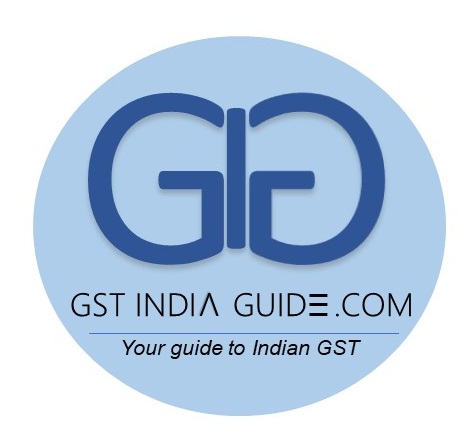The government has released the draft formats of the new GST return filing system, which is expected to be made mandatory from June 2019. The return format is in line with the simplified return filing mechanism released by the government in July 2018. The new system also provides for amendment return to allow taxpayers to correct mistakes committed in the original return. The various types of returns and their applicability are as follows:
| Name and periodicity of the return | Applicability | Category of outward and inward supplies allowed |
| GST RET 1 (Normal/Monthly) | If the aggregate turnover, during the preceding financial year, is more than INR 50 million | No restriction |
| GST RET 1 (Quarterly) | If the aggregate turnover, during the preceding financial year, is up to INR 50 million | No restriction |
| Sahaj* (Quarterly) | If the aggregate turnover, during the preceding financial year, is up to INR 50 million | Outward supplies
B2B and B2C Inward supplies Attracting reverse charge |
| Sugam* (Quarterly) | If the aggregate turnover, during the preceding financial year, is up to INR 50 million | Outward supplies
Only B2B Inward supplies Attracting reverse charge |
*No Input Tax Credit (ITC) can be availed in respect of the missing invoices.
Various Parts of the New Return Filing System
The new return filing system has been divided into three distinct parts, which are as follows:
- FORM GST ANX-1 – Annexure of outward supplies, import and inward supplies attracting reverse charge
- FORM GST ANX-2 – Annexure of inward supplies
- FORM GST RET-1 – Monthly/Quarterly (Normal) return
Features of the New Return Filing System
GST ANX-1 – Outward Supplies
- The supplier can upload details of documents of outward supply on a real-time basis
- The facility to upload document details would not be available to a supplier on the following days:
- Monthly return filer – 18 to 20 of the month following the tax period
- Quarterly return filer – 23 to 25 of the month following the quarter
- The recipient will get ITC in a particular month/quarter on the basis of the documents uploaded by the supplier up to the 10th of the month, following the month/quarter for which the return is being filed.
GST ANX-2 – Auto-drafted Inward Supplies
- The recipient can ‘accept,’ ‘reject’ or ‘keep pending’ the documents uploaded by the supplier. This facility would be available to the recipient continuously.
- A document once accepted by the recipient would not be available for an amendment to the supplier. However, a separate facility for the same would be provided. Also, invoices kept pending by the recipient would not be available for an amendment to the supplier unless they are rejected by the recipient.
- Any invoice with an error that cannot be corrected through a financial debit/credit note shall be rejected by the recipient. Example:
- The recipient does not agree with some of the details, such as HSN, tax rate, etc.
- GSTIN of the recipient is erroneous, and therefore it is visible in the GST ANX-2 of a registered person who is not concerned with the supply.
- Any document which has not been either accepted, rejected or kept pending by the recipient shall bedeemed to have been acceptedwhen the recipient files its return.
- GST ANX-2 will be treated as deemed filed upon the filing of the main return, i.e., GST RET-1.
- The availability of ITC to the recipient is linked to the timely compliances by the supplier.
GST RET-1 – Normal Return
GST RET-1 is essentially a consolidation of GST ANX-1 and GST ANX-2. Most of the key items will be auto-populated from GST ANX-1 and GST ANX-2. Key features of the GST RET-1 are as follows:
- Advances received and adjusted would have to be manually inserted by the taxpayer.
- Exempt supplies, nil-rated supplies, supplies by an SEZ to Domestic Tariff Area (DTA) unit on a bill of entry, etc., would have to be disclosed separately.
- Provisional ITC in relation to the documents not uploaded by the suppliers can be disclosed and availed through GST RET-1.
- The net ITC availed in a particular month would have to be bifurcated into ITC on capital goods and services.
Amendments to GST Returns
The new return filing system provides for amendment of GST ANX-1 through GST ANX-1A and GST RET-1 through GST RET-1A. The amendments to GST ANX-1 can be filed before the due date for furnishing the return for September following the end of the fiscal year or the actual date of furnishing relevant annual return, whichever is earlier.
SKP’s Comments
In line with the scheme of the GST law, the new return filing system ensures that the ITC of the recipient is intrinsically linked with the declaration of outward supplies by the suppliers. Businesses would have to ensure that there is timely uploading and acceptance/rejection of invoices to ensure that there is no blockage of ITC. Vendor-customer relationships and communication will be of critical importance for the smooth functioning of the new compliance system.
Presently, in view of the lack of clarity in the law, many businesses pay GST liability under RCM in cash in the month in which it arises. The credit of such tax paid under RCM is taken in the subsequent month. Interestingly, in the return format, it appears that the GST liability under RCM declared in GST ANX-1 would be auto-populated as ITC in GST RET-1 in the same month. This is a welcome move for businesses, which should ease their working capital requirements. The move is in consonance with the VAT laws of other jurisdictions, such as the UK and UAE.
